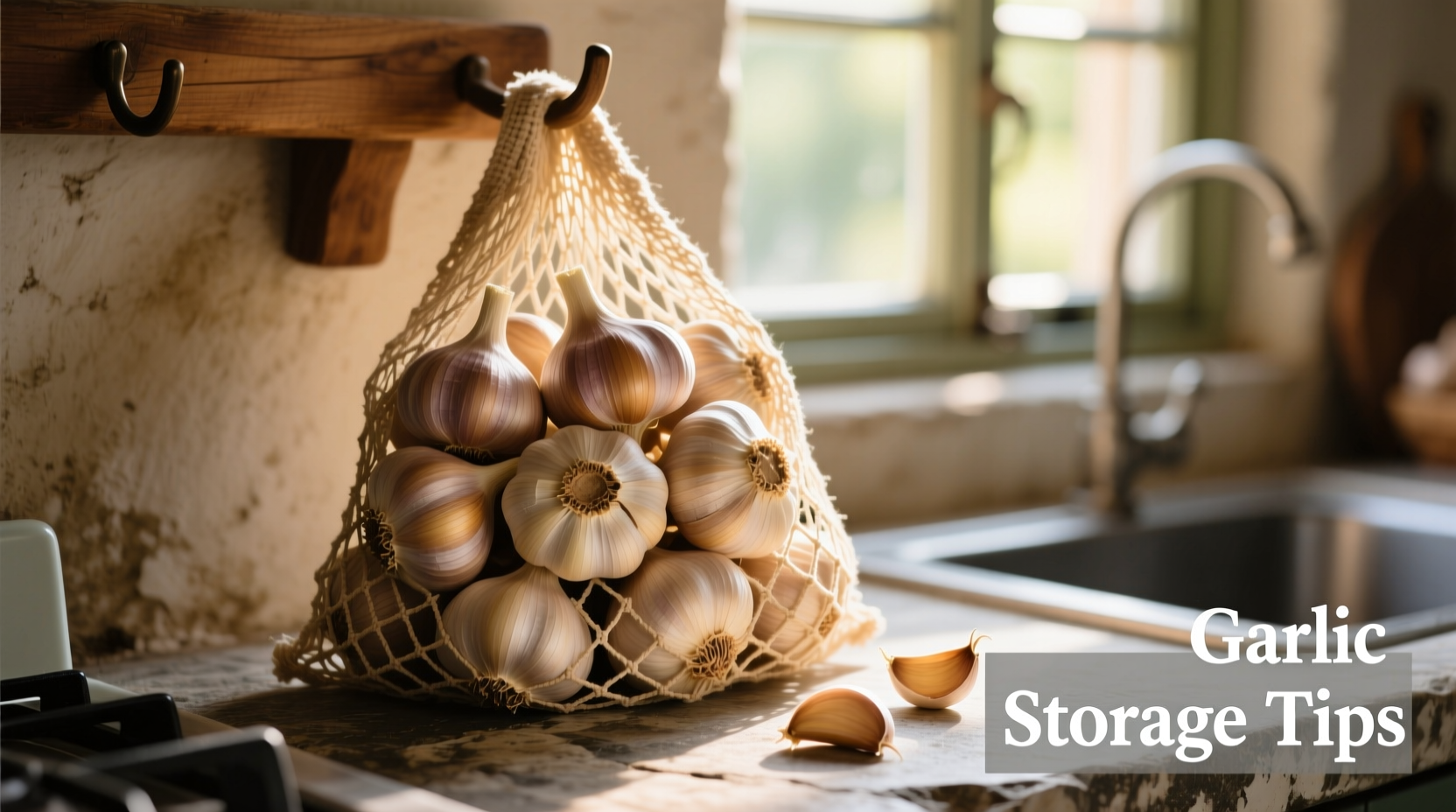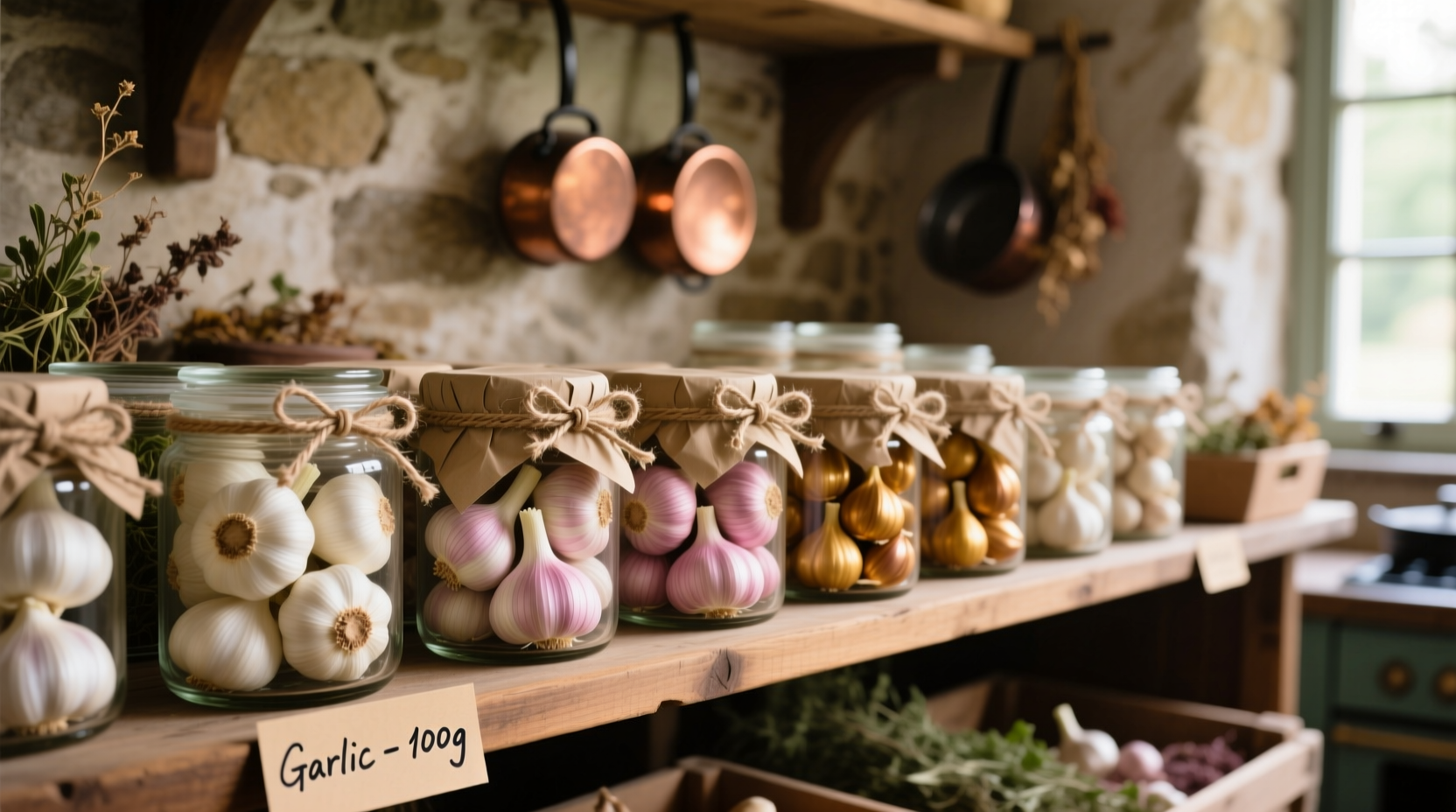The Complete Science-Backed Guide to Storing Garlic Perfectly
Garlic transforms ordinary dishes into culinary masterpieces, but nothing ruins the experience like discovering your prized bulbs have sprouted, molded, or turned mushy. Understanding proper garlic storage isn't just about convenience—it directly impacts flavor intensity, shelf life, and food safety. This guide delivers evidence-based methods that professional chefs and food scientists use to maximize garlic's longevity while preserving its complex flavor profile.
Why Garlic Storage Matters: The Food Science Perspective
Garlic belongs to the Allium family, which contains sulfur compounds responsible for both its distinctive flavor and remarkable health benefits. When improperly stored, these compounds break down rapidly, leading to:
- Loss of allicin (the compound with antimicrobial properties)
- Premature sprouting that diverts energy from flavor compounds
- Moisture accumulation that promotes mold growth
- Texture degradation from enzymatic browning
According to research from the University of California Agriculture and Natural Resources, garlic stored at optimal conditions maintains 95% of its beneficial compounds for up to 180 days, compared to just 30 days under suboptimal conditions. This isn't just about avoiding waste—it's about preserving garlic's culinary and nutritional value.
Whole Bulb Storage: Professional Methods That Work
When you bring fresh garlic home from the market, your storage approach determines whether it lasts weeks or months. Here's what actually works:
| Storage Method | Expected Shelf Life | Flavor Preservation | Key Considerations |
|---|---|---|---|
| Mesh bag in cool, dark pantry | 3-6 months | Excellent | Ideal temperature: 60-65°F (15-18°C) with 60-70% humidity |
| Braided and hung | 4-5 months | Excellent | Requires proper air circulation; traditional method used by chefs |
| Refrigerator (whole bulb) | 1-2 months | Poor | High moisture causes premature sprouting; not recommended |
| Airtight container | 2-3 weeks | Terrible | Traps moisture leading to mold; worst storage method |
Critical Storage Conditions You Must Control
Successful garlic storage depends on managing four environmental factors:
Temperature: The Sweet Spot for Longevity
Garlic enters dormancy below 40°F (4°C) and becomes active above 77°F (25°C). The ideal storage temperature range is 60-65°F (15-18°C). This explains why refrigerators (typically 35-38°F) actually trigger sprouting—garlic interprets the cold as winter ending and prepares for spring growth. Pantries, cellars, or cool cupboards work best.
Humidity: The Mold Prevention Factor
USDA food safety guidelines specify that garlic requires 60-70% relative humidity for optimal storage. Higher humidity encourages mold growth (particularly Penicillium species), while lower humidity causes dehydration and shriveling. In humid climates, adding a silica gel packet to your storage container can absorb excess moisture without affecting the garlic.
Air Circulation: The Breathability Requirement
Garlic continues to respire after harvest. Restricting airflow traps ethylene gas and moisture, accelerating spoilage. This is why mesh bags, woven baskets, or ventilated ceramic containers outperform plastic bags or sealed jars. Professional chefs often hang garlic in breathable cotton sacks or braid bulbs for maximum air exposure.
Light Exposure: Preventing Premature Sprouting
Photoreceptors in garlic detect light wavelengths that signal seasonal changes. Exposure to light—especially fluorescent or direct sunlight—triggers sprouting. Always store garlic in complete darkness. This explains why garlic stored in clear glass containers on countertops typically sprouts within weeks.
Storing Individual Cloves: When You've Broken the Bulb
Once you separate cloves from the bulb, their shelf life decreases significantly. Here's how to maximize freshness:
- Unpeeled cloves: Store in a mesh bag or paper bag in your pantry for 7-10 days. Never refrigerate unpeeled cloves as cold temperatures promote sprouting.
- Peeled cloves: Place in an airtight container with a paper towel to absorb moisture. Store in the refrigerator for up to 10 days. Change the paper towel if it becomes damp.
- Minced or chopped garlic: Mix with a small amount of olive oil (1 part garlic to 2 parts oil) and store in a glass jar in the refrigerator for up to 14 days. The oil creates a protective barrier against oxidation.

Advanced Storage Techniques for Serious Home Cooks
For those who use garlic frequently or want to preserve seasonal harvests, these professional methods deliver exceptional results:
Freezing Garlic: The Flavor Preservation Method
Freezing maintains garlic's flavor compounds better than any other long-term storage method. Two effective approaches:
- Whole cloves: Freeze unpeeled cloves in airtight freezer bags. When needed, shake the bag and the skins will slip off the frozen cloves. Use directly in cooking without thawing.
- Garlic paste: Blend peeled cloves with a small amount of oil, freeze in ice cube trays, then transfer cubes to freezer bags. Each cube equals approximately one clove.
Vacuum Sealing: The Commercial-Grade Solution
According to a 2023 study published in the Journal of Food Science, vacuum-sealed garlic stored at 41°F (5°C) maintained 92% of its allicin content after 6 months. This method works best for peeled cloves or minced garlic. Always include an oxygen absorber packet to prevent enzymatic browning.
Common Garlic Storage Mistakes (And How to Fix Them)
Even experienced cooks make these critical errors that compromise garlic quality:
- Mistake: Storing garlic near onions or potatoes Solution: These release ethylene gas that accelerates sprouting. Store garlic separately.
- Mistake: Washing garlic before storage Solution: Moisture promotes mold. Brush off dirt but never wash whole bulbs.
- Mistake: Using plastic bags for long-term storage Solution: Switch to breathable containers like mesh bags or terra cotta garlic keepers.
- Mistake: Storing in the refrigerator door Solution: Temperature fluctuations cause condensation. Keep in a cool, dark pantry instead.
When to Discard Garlic: Safety Guidelines
Garlic rarely causes foodborne illness, but certain conditions indicate it's time to discard:
- Visible mold growth (discard entire bulb—even if only one clove is affected)
- Soft, mushy texture (indicates advanced decay)
- Green sprouts longer than 1 inch (edible but significantly diminished flavor)
- Strong, unpleasant odor (indicates fermentation or spoilage)
Importantly, never consume garlic stored in oil at room temperature for more than 4 hours due to botulism risk. Refrigerate garlic-in-oil mixtures and use within 14 days.
Seasonal Storage Adjustments for Year-Round Freshness
Your storage approach should adapt to seasonal changes:
- Summer: In humid climates, add silica gel packets to absorb excess moisture. Store in the coolest part of your home, away from the kitchen's heat and steam.
- Winter: In dry climates, place a damp paper towel in the container to maintain humidity. Avoid storing near heating vents.
- Garlic harvest season (July-August): Cure freshly harvested garlic for 2-3 weeks in a warm, dry, shaded area with good airflow before storing long-term.











 浙公网安备
33010002000092号
浙公网安备
33010002000092号 浙B2-20120091-4
浙B2-20120091-4